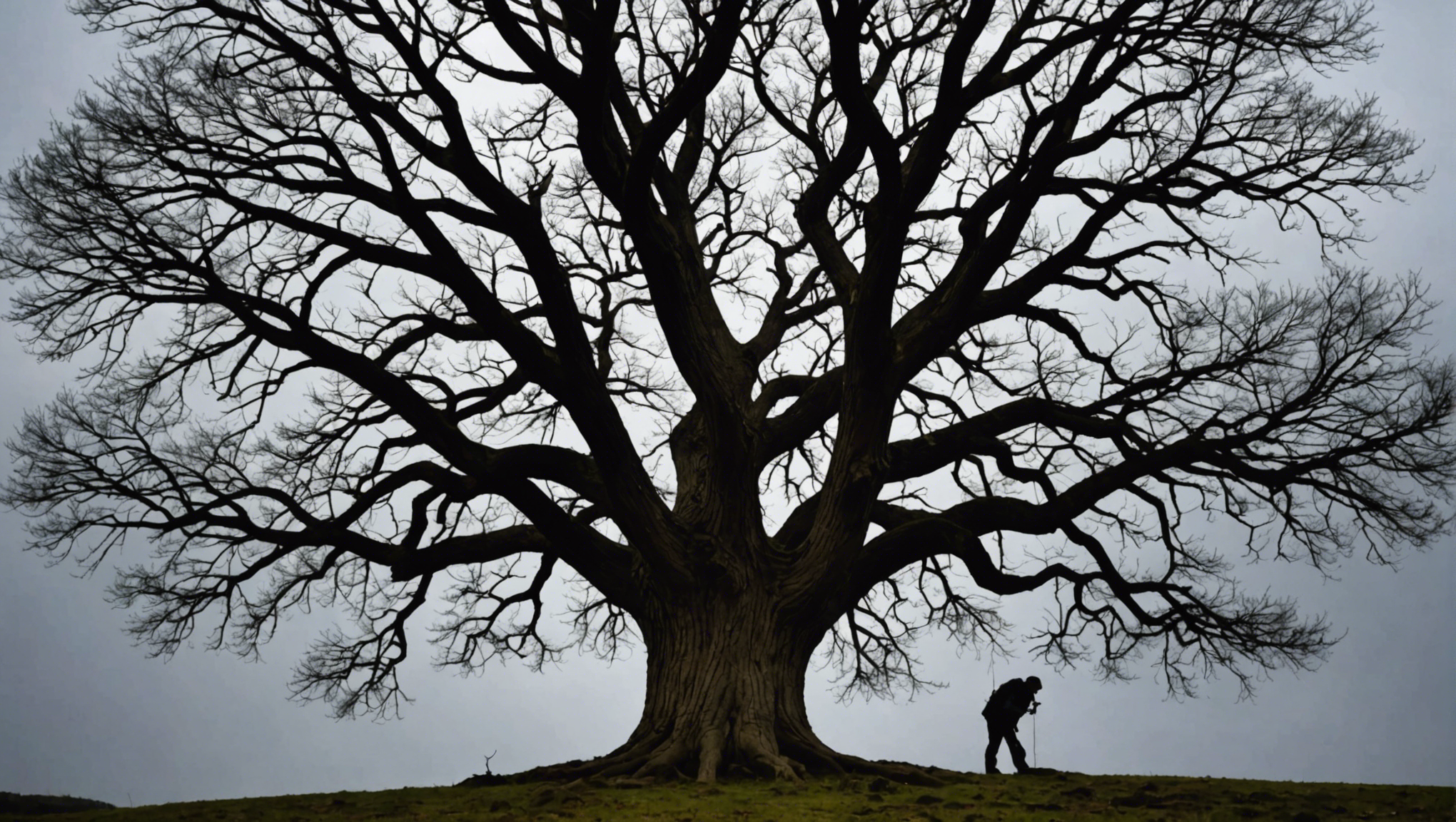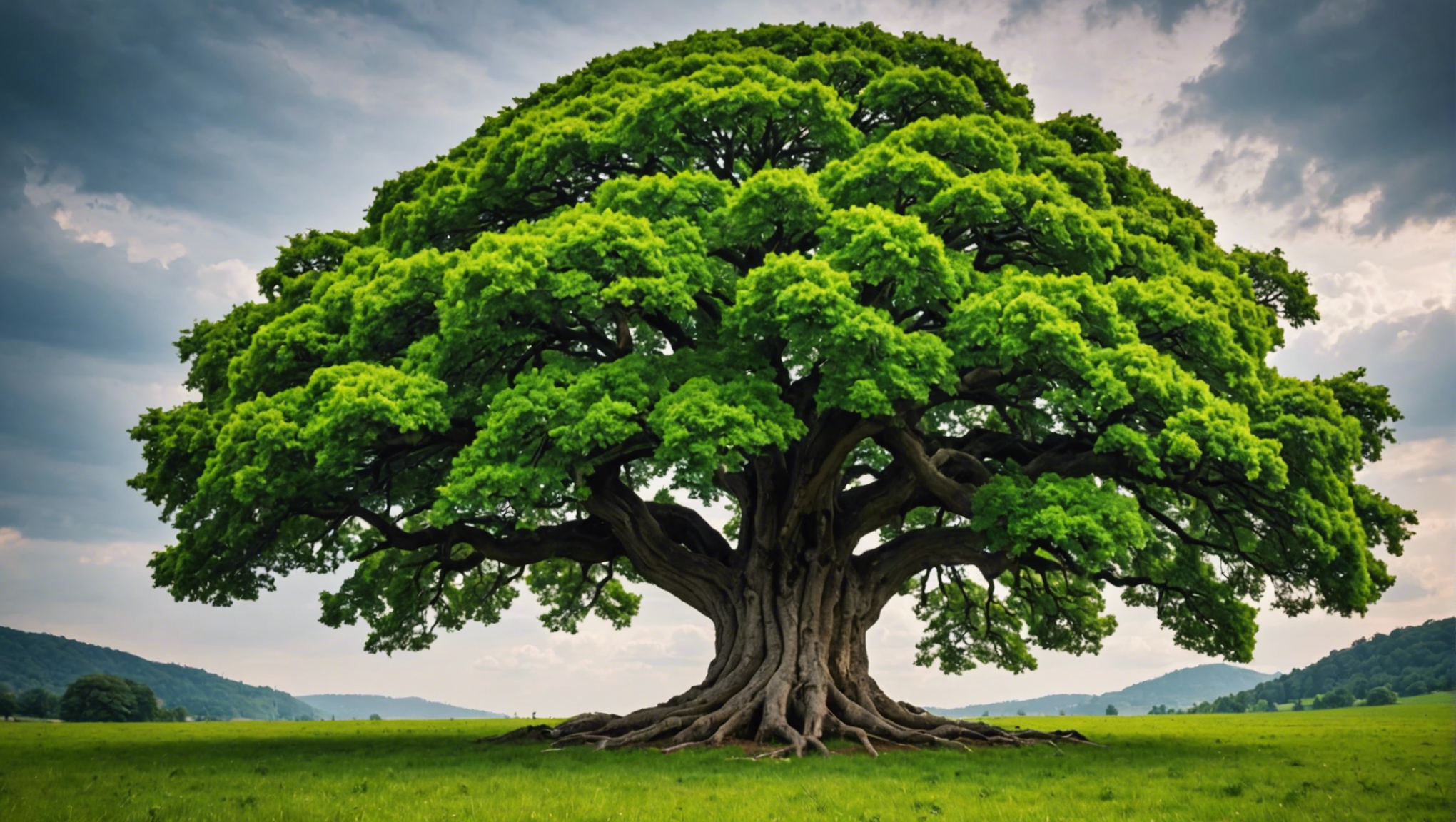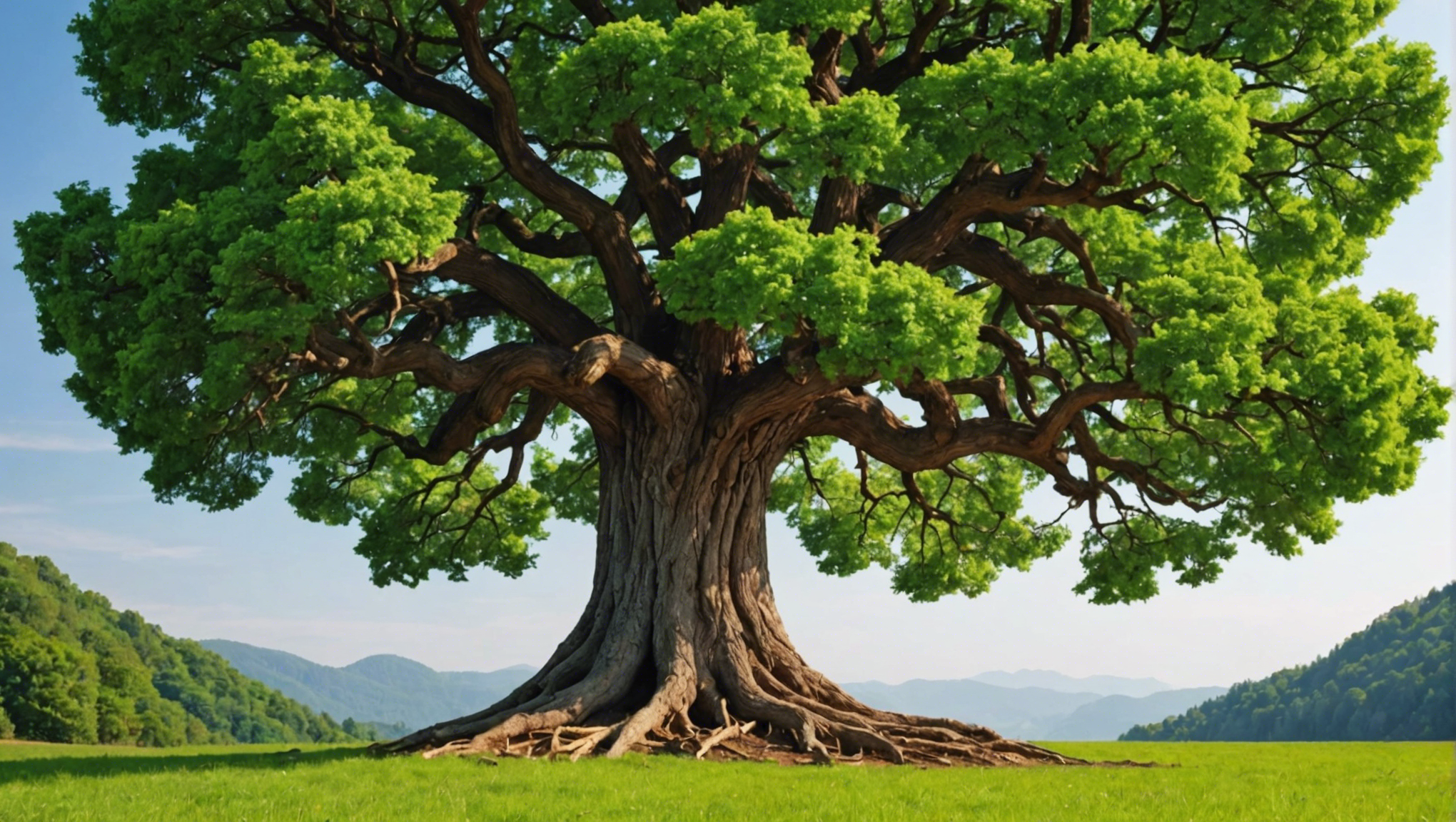Title: The Tree: A Symbol of Life and Resilience
Introduction: In this article, we delve into the profound symbolism of the tree as a representation of life and resilience. Explored through history, culture, and nature, discover why this majestic organism holds such a powerful and enduring significance in our lives.
The Importance of Trees in Ecosystems

Trees play a crucial role in maintaining the balance and health of ecosystems worldwide. From providing oxygen to supporting biodiversity, their significance cannot be overstated.
oxygen production and air purification
One of the most vital contributions of trees is their role in producing oxygen through the process of photosynthesis. They absorb carbon dioxide and release oxygen, essential for the survival of most living beings on Earth. Moreover, trees act as air purifiers, filtering out pollutants and improving air quality.
habitat and biodiversity
Trees create habitats for a multitude of species, including birds, insects, and mammals. They offer shelter, food sources, and protection for various organisms, promoting ecological diversity. The diverse ecosystems supported by trees contribute to the overall health and stability of the environment.
soil conservation and water cycle
Tree roots play a crucial role in preventing soil erosion by holding the soil together. They also help maintain soil fertility by trapping and storing essential nutrients. Additionally, trees influence the water cycle by absorbing water from the soil and releasing it back into the atmosphere through a process called transpiration.
climate regulation
As carbon sinks, trees help in regulating climate by absorbing carbon dioxide and mitigating the greenhouse effect. They contribute to cooling the environment and reducing the impact of climate change through their presence in ecosystems.
The importance of trees in ecosystems is undeniable. They are not just essential for the environment but also for human well-being. It is crucial to protect and preserve trees and forests to ensure the continued balance and health of our planet’s ecosystems.
The Cultural Significance of Trees in Various Societies

Trees have held significant cultural importance in societies across the globe for centuries. They are not just vital for the environment but also deeply ingrained in the cultural fabric of different civilizations. Let’s explore the diverse ways in which trees hold cultural significance in various societies.
spiritual symbolism
In many cultures, trees carry strong spiritual symbolism. They are often seen as sacred entities that connect the earthly realm with the divine. For example, in Celtic tradition, the oak tree represents strength and endurance, while the bodhi tree is revered in Buddhism as the tree under which Buddha attained enlightenment.
rituals and ceremonies
Trees play a central role in rituals and ceremonies in numerous societies. The planting of a tree to commemorate a significant event or to mark a new beginning is a common practice around the world. In some indigenous communities, tree-worship ceremonies are held to honor the spirit of the tree and seek blessings for the community.
mythology and folklore
Trees feature prominently in the mythology and folklore of many societies. From the world tree Yggdrasil in Norse mythology to the Banyan tree in Hindu mythology, trees are often associated with creation, life, and wisdom. Legends and stories passed down through generations further emphasize the importance of trees in shaping cultural beliefs.
ecological importance
Beyond their cultural significance, trees hold vital ecological importance in various societies. They provide oxygen, shelter for wildlife, and help regulate the climate. In many traditional societies, the conservation of forests and sacred groves is closely linked to cultural practices, reflecting a deep understanding of the interconnection between nature and culture.
art and literature
Trees have inspired countless works of art and literature across cultures. From ancient cave paintings depicting trees to modern-day poems and paintings, the beauty and symbolism of trees have sparked creativity in artists and writers alike. Trees often serve as powerful metaphors for growth, resilience, and interconnectedness in artistic expressions.
In conclusion, trees transcend their physical existence to symbolize deeper meanings in various societies. Their cultural significance reflects a profound connection between nature, spirituality, and human experience. By honoring and preserving trees, we not only protect the environment but also uphold centuries-old cultural traditions that enrich our lives.
The Resilience of Trees in the Face of Adversity

Adaptability and Strength
Trees stand as a symbol of resilience in the face of adversity. They have the remarkable ability to adapt to their environment, weathering storms, droughts, and even harsh winters. Their roots dig deep into the ground, providing stability and strength. Trees, through their flexibility and perseverance, continue to thrive despite facing various challenges.
Surviving Harsh Conditions
In times of extreme conditions, such as wildfires or flooding, trees demonstrate their resilience. Some species have developed thick bark to protect themselves from fires, while others can survive long periods of submersion in water. This ability to endure such adversities showcases the remarkable survival mechanisms that trees have developed over millions of years.
Community and Support
In a forest, trees often work together in a network that supports the entire ecosystem. Through interconnected root systems and the exchange of nutrients, trees demonstrate the power of community in overcoming challenges. When one tree is weakened, others provide support, ensuring the survival of the forest as a whole.
Renewal and Growth
After facing adversity, trees show incredible resilience in their ability to regrow and flourish. Even when stripped of their leaves or branches, they have the capacity to regenerate and continue their growth. This cycle of renewal highlights the enduring strength that trees possess.
Lessons for Humanity
The resilience of trees offers valuable lessons for humanity. Just as trees adapt to changing environments and overcome hardships, we too can learn to navigate challenges with grace and resilience. By drawing inspiration from the endurance of trees, we can cultivate a deeper appreciation for the strength that lies within us.
In essence, trees serve as a powerful reminder of the resilience that exists in nature. Their ability to withstand adversity, support one another, and continue to grow serves as a source of inspiration for all. As we face our own challenges, may we draw strength from the wisdom of trees and strive to emulate their enduring spirit.
The Connection Between Trees and Human Well-being
the importance of Trees in human well-being
Trees are not just part of our environment; they play a crucial role in the well-being of human beings. The connection between trees and human well-being is undeniable, as trees provide a wide range of benefits that contribute to our physical, mental, and emotional health.
cleaning the air and providing oxygen
One of the most vital roles that trees play in human well-being is their ability to clean the air and provide oxygen. Through the process of photosynthesis, trees absorb carbon dioxide and other harmful pollutants from the air and release oxygen, which is essential for our survival. Breathing clean air is paramount for maintaining good health and reducing the risk of respiratory illnesses.
stress reduction and mental health
Spending time in nature, surrounded by trees, has been proven to have a calming effect on our minds and bodies. The presence of trees helps reduce stress, anxiety, and depression, promoting overall mental well-being. Green spaces with trees have been associated with lower levels of cortisol, the stress hormone, and improved mood. Connecting with nature through trees can be a powerful tool for managing mental health issues.
promoting physical health and longevity
Trees contribute to our physical health in various ways. By providing shade, trees help lower temperatures and reduce the risk of heat-related illnesses. Additionally, spending time outdoors among trees encourages physical activity, such as walking or exercising, which is beneficial for overall health. Research has shown that living in areas with more trees is linked to lower mortality rates and increased longevity.
enhancing community well-being
Trees play a significant role in community well-being by fostering social interactions and a sense of belonging. Green spaces with trees serve as gathering places for people to come together, relax, and engage in recreational activities. Trees in urban areas create a more pleasant environment, improve aesthetics, and encourage community cohesion. The presence of trees in neighborhoods has been linked to higher levels of well-being and satisfaction among residents.
preserving biodiversity and ecosystem balance
Trees are essential for maintaining biodiversity and ecosystem balance. They provide habitats for a variety of species, from birds to insects, contributing to the biodiversity of our planet. Trees also help regulate the climate, prevent soil erosion, and improve water quality. Protecting and planting trees is crucial for preserving the delicate balance of our ecosystems and ensuring a healthy environment for future generations.
In conclusion, the connection between trees and human well-being is multifaceted and profound. From cleaning the air we breathe to promoting mental and physical health, trees offer a wide range of benefits that are essential for our overall well-being. It is imperative that we recognize the importance of trees and take action to protect, preserve, and plant more trees to ensure a healthy and sustainable future.


Article written by Dera
Greetings, I am Dera, a 35-year-old individual with a deep passion for spirituality. Through my website, I aim to share my insights and knowledge to help others on their spiritual journey. Join me on the path to inner peace and enlightenment.